Vanilla News October 31, 2021
From Around The world…
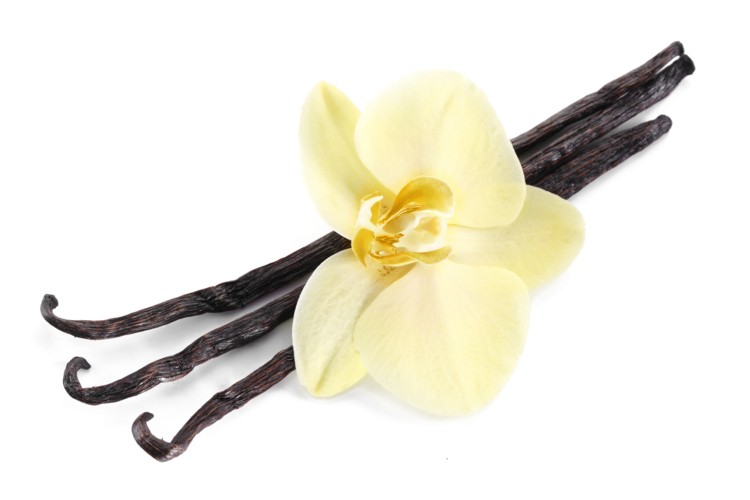
COMOROS
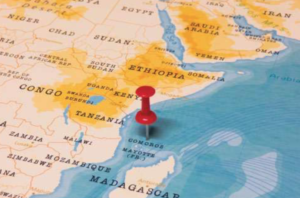 The Comoros Islands in the Indian Ocean just northeast of Madagascar are known for the production of high quality bourbon vanilla, with annual production between 35 – 50 MT. Considerable efforts were made to expand production during the high prices of 2016 – 19 but, as yet, no additional output has appeared on the international market. This is probably the result of a combination of high production, lower vanilla prices, the pandemic and the severe logistical and shipping constraints faced by the country.
The Comoros Islands in the Indian Ocean just northeast of Madagascar are known for the production of high quality bourbon vanilla, with annual production between 35 – 50 MT. Considerable efforts were made to expand production during the high prices of 2016 – 19 but, as yet, no additional output has appeared on the international market. This is probably the result of a combination of high production, lower vanilla prices, the pandemic and the severe logistical and shipping constraints faced by the country.
INDONESIA
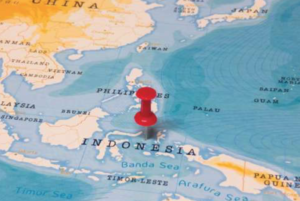 Indonesian vanilla has different flavour and fragrance characteristics than Madagascar vanilla and its industrial grade is the preferred vanilla for blending with neighbouring PNG extraction grade. This is expected to be a significant season for Indonesian vanilla. Lots of farmers started plantations in 2017-18 because of the high prices. While the volumes may be less this year, the quantity available could double next year. The quality is also expected to be good, as the beans are larger in size. In the crop cycle, the beans in the first years are big, which means until 2024, major volumes can be expected from the Indonesian market. Also with fewer players, most of the crop is expected to mature prior to harvesting. However, if the price falls under USD 50/kg, producers may get dejected, and stop working on the fields. Keeping government projections aside, 2021 will likely see around 150 MT of vanilla production.
Indonesian vanilla has different flavour and fragrance characteristics than Madagascar vanilla and its industrial grade is the preferred vanilla for blending with neighbouring PNG extraction grade. This is expected to be a significant season for Indonesian vanilla. Lots of farmers started plantations in 2017-18 because of the high prices. While the volumes may be less this year, the quantity available could double next year. The quality is also expected to be good, as the beans are larger in size. In the crop cycle, the beans in the first years are big, which means until 2024, major volumes can be expected from the Indonesian market. Also with fewer players, most of the crop is expected to mature prior to harvesting. However, if the price falls under USD 50/kg, producers may get dejected, and stop working on the fields. Keeping government projections aside, 2021 will likely see around 150 MT of vanilla production.
Indonesia’s vanilla market is a free market with minimal government interference. Traditionally, a high price in the market brings lots of traders into the mix. Some clove traders had stored vanilla beans from 2004, when prices were at rock bottom, until 2017. Thus, large volumes were traded in 2017-18, even though the fresh crop did not exceed 250 MT. Generally, 300-400 MT of vanilla is produced by Indonesia but the recent lower market price could bring production down by a half. Suppliers who had bought beans at a high price, preferred to keep the inventory rather than sell. These traders have now become more active with demand beginning to pick up.
MADAGASCAR
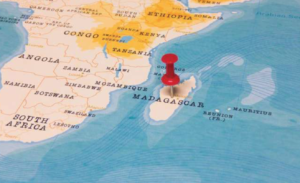 The past year has seen a further substantial fall in vanilla prices. Some traders are hopeful that the increase in demand following the increased economic activity following the ending of lockdowns will lead to stabilisation of prices at current levels.
The past year has seen a further substantial fall in vanilla prices. Some traders are hopeful that the increase in demand following the increased economic activity following the ending of lockdowns will lead to stabilisation of prices at current levels.
The opening of Madagascar exports in mid-September saw the government imposing a fixed minimum export price of US$ 250/kg, which was substantially higher than ruling world market prices. This created some uncertainty in the market as some competing origins set prices at too high a level. The Madagascan government has again set a minimum export price of US$ 250 /kg for the 2021 season, harvesting of which is undertaken in July and August. In an effort to support growers’ incomes the government is endeavouring to impose a fixed minimum green vanilla purchase price of approximately US$ 20/kg.
The high prices of recent years encouraged several countries to expand production, including Madagascar, Indonesia, Papua New Guinea (PNG), Comoros and Uganda. However, the recent sizeable fall in vanilla prices is likely to lead, at best, to their production stabilising despite increasing demand. In contrast to other vanilla producers, Madagascar’s government undertakes greater regulation of the sector, in part reflecting vanilla’s importance to the economy both as an employer of tens of thousands of smallholders and labourers and as an important source of export earnings, since almost all production is exported. Madagascar continues to account for a large proportion of global natural vanilla production, one of the world’s favourite flavours. Production in Madagascar in 2021 is predicted at approximately 2,000 MT, a similar level to 2020.
It is predicted that demand for vanilla will increase not only because of the fall in vanilla prices but also because of the recovery of the food service and leisure sectors in major markets, particularly in North America and Europe, which have been badly affected by the impact of the COVID-19 pandemic. The latter should facilitate increased usage of higher priced gourmet and black vanilla. Rising demand, combined with stable lower levels of vanilla production should help to limit the price decline – although predicting vanilla price and production trends is never easy.
PAPUA NEW GUINEA
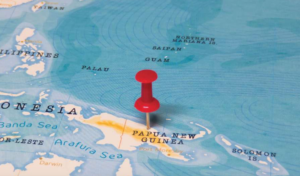 PNG produces both V.tahitensis and V.planifolia vanilla beans in a range of qualities with overall average quality having improved in recent years. PNG industrial vanilla is now readily accepted by major industrial users in North America, Europe, and Australia, while some of its higher quality black/gourmet vanilla is imported into neighbouring Indonesia for mixing with local production. In recent years vanilla production in PNG and particularly the Sepik regions has been expanding, encouraged by high global prices. Production is undertaken by subsistence farmers on small household plots of 0.1 ha. to 0.5 ha., with women and the young playing an important role, particularly in the labour-intensive activities of pollination and processing. However, knowledge is limited regarding growing techniques and the drying and curing of green beans. An estimated 50%-75% PNG vanilla originates from East Sepik and Sandaun (formerly West Sepik) regions and some 90% of the 90,000 households in the area are dependent on vanilla as a source of income. This area borders Papua province in Indonesia and the majority of trade is done through informal channels since Indonesia is an important market. In 2020 the border with Indonesia was closed, which reduced the amount of trade. While some vanilla is smuggled, there is a procedure for exporting legally and some vanilla imports are recorded in Indonesian trade statistics.
PNG produces both V.tahitensis and V.planifolia vanilla beans in a range of qualities with overall average quality having improved in recent years. PNG industrial vanilla is now readily accepted by major industrial users in North America, Europe, and Australia, while some of its higher quality black/gourmet vanilla is imported into neighbouring Indonesia for mixing with local production. In recent years vanilla production in PNG and particularly the Sepik regions has been expanding, encouraged by high global prices. Production is undertaken by subsistence farmers on small household plots of 0.1 ha. to 0.5 ha., with women and the young playing an important role, particularly in the labour-intensive activities of pollination and processing. However, knowledge is limited regarding growing techniques and the drying and curing of green beans. An estimated 50%-75% PNG vanilla originates from East Sepik and Sandaun (formerly West Sepik) regions and some 90% of the 90,000 households in the area are dependent on vanilla as a source of income. This area borders Papua province in Indonesia and the majority of trade is done through informal channels since Indonesia is an important market. In 2020 the border with Indonesia was closed, which reduced the amount of trade. While some vanilla is smuggled, there is a procedure for exporting legally and some vanilla imports are recorded in Indonesian trade statistics.
Logistics in PNG are notoriously difficult – the transport system is highly fragmented and the major commercial port is not linked by road to the capital city. The high unit value, non-perishability, suitable agro-ecological conditions for vanilla growing and its relatively easy transportability have led to the encouragement of vanilla production as a cash crop in rural areas by both government and international agencies. Over the past few years there has been an improvement in both the volume and value of vanilla production. Accurate production and trade data are difficult to obtain – and cross border trade makes it even more difficult – but current estimates suggest 2021 production could be more than 300 MT.
UGANDA
 In recent years efforts have been made by Ugandan organisations and international companies to increase both the quantity and quality of production. These efforts seem to be bearing fruit with improved yields and quality. With two annual harvests it is estimated that production in 2021 will be between 100 – 120 MT, substantially higher than in recent years.
In recent years efforts have been made by Ugandan organisations and international companies to increase both the quantity and quality of production. These efforts seem to be bearing fruit with improved yields and quality. With two annual harvests it is estimated that production in 2021 will be between 100 – 120 MT, substantially higher than in recent years.
 Ultra International B.V.
Ultra International B.V.